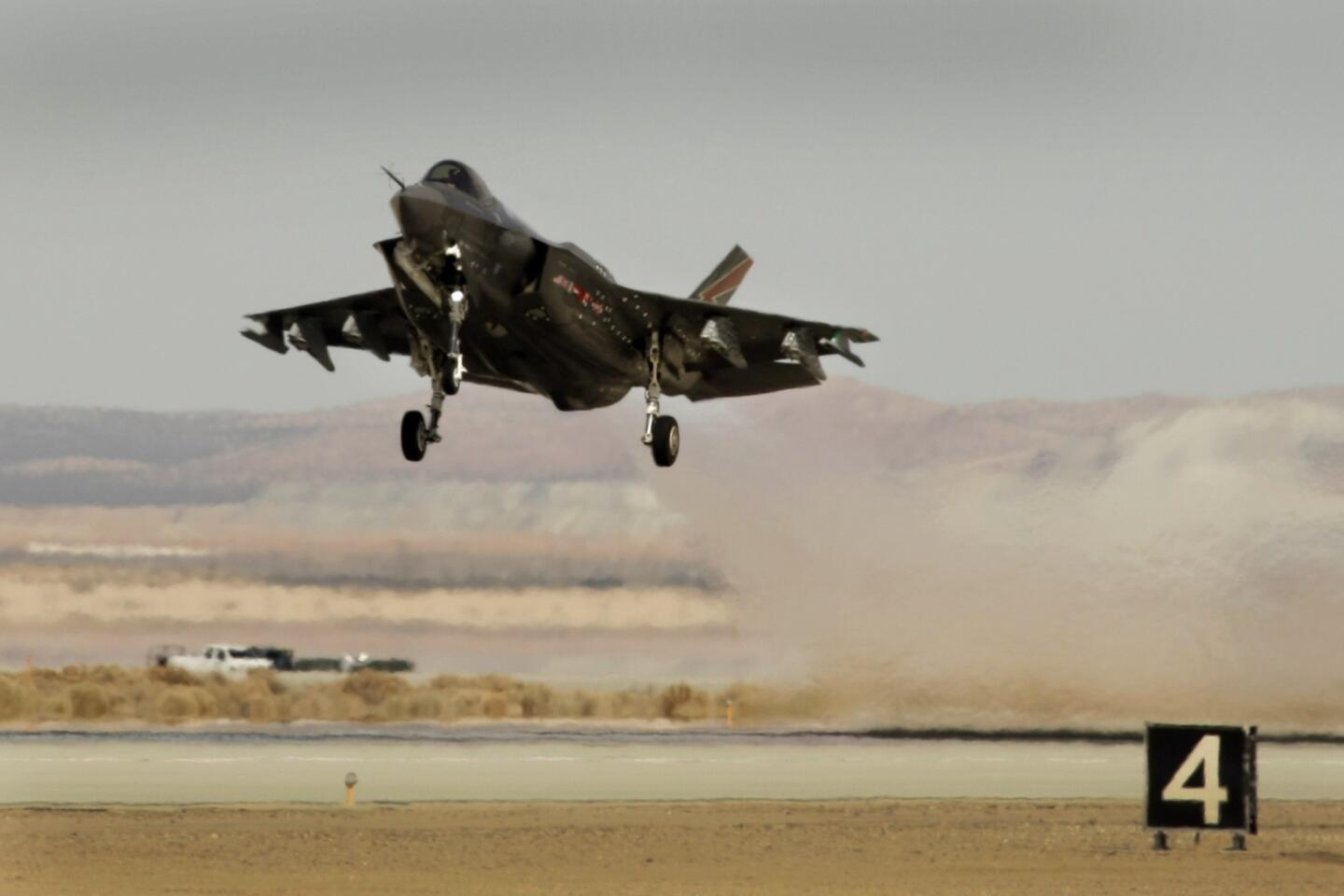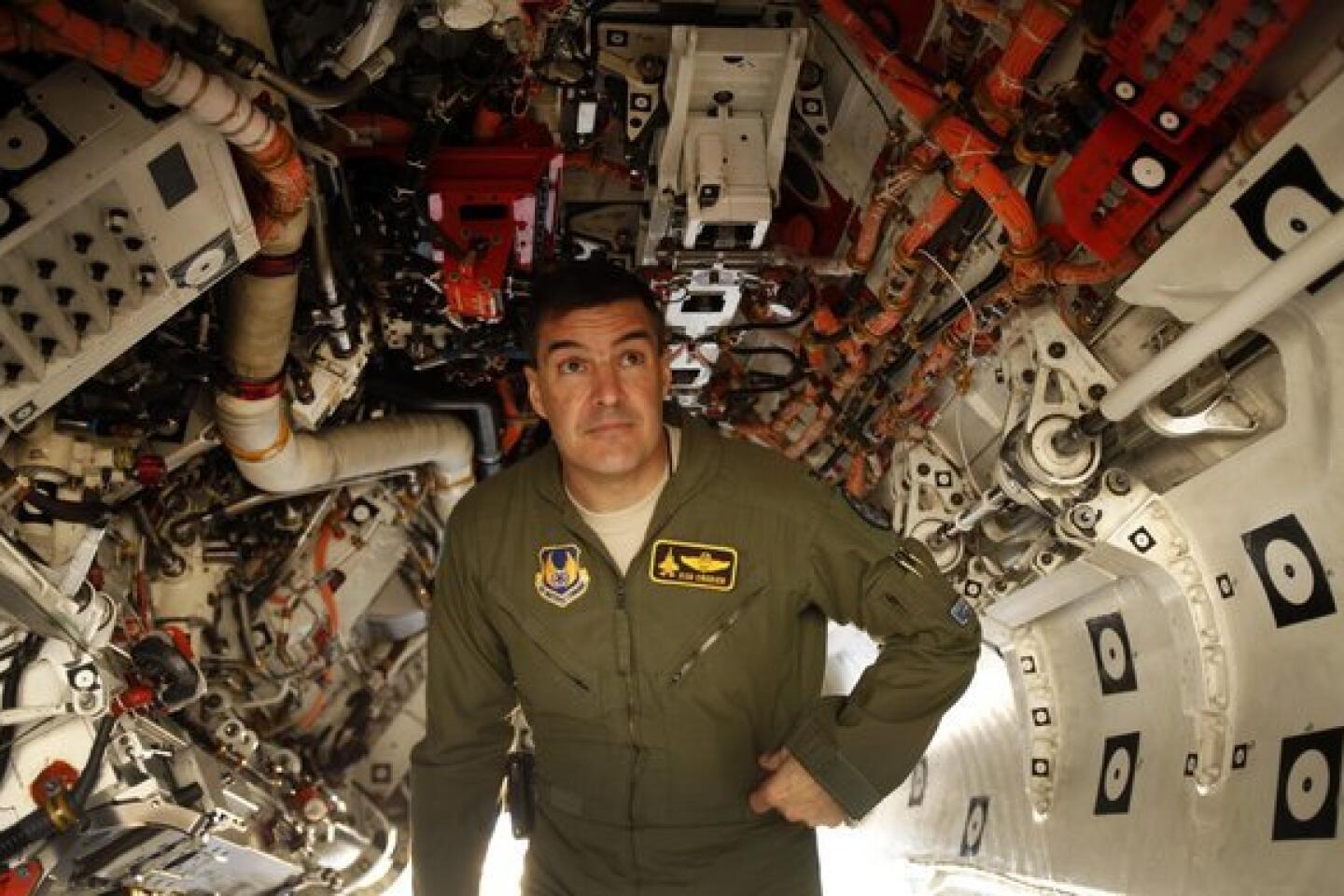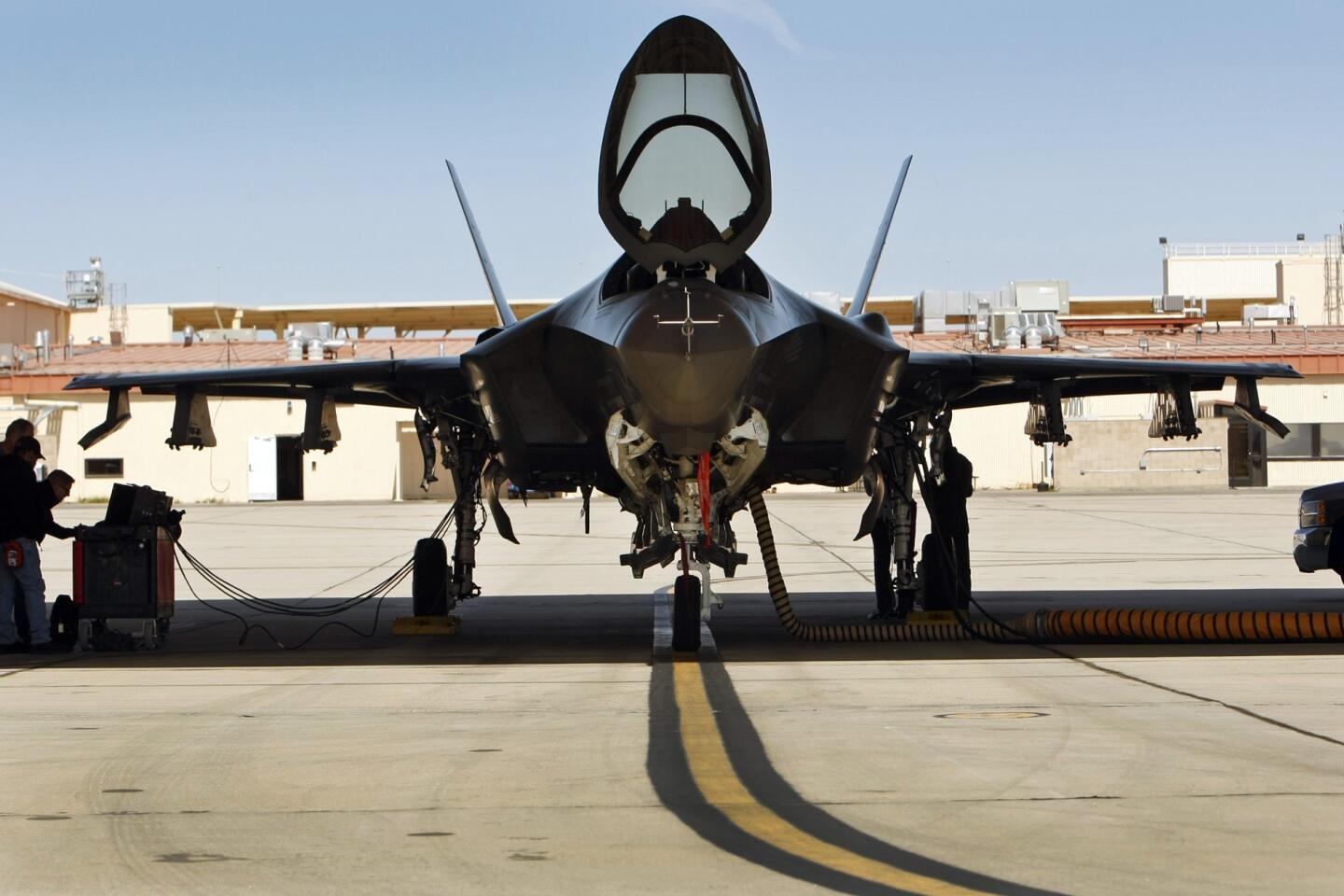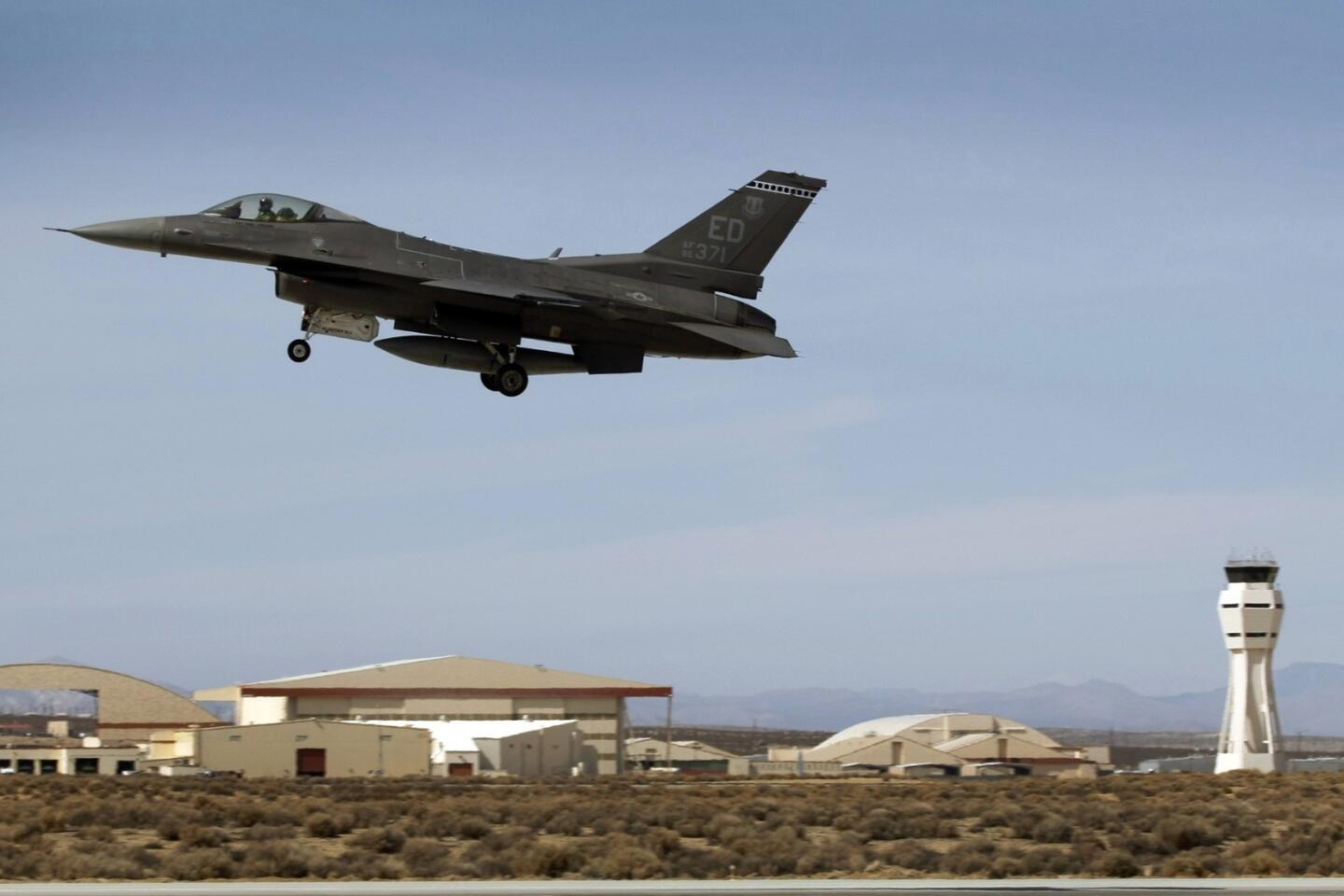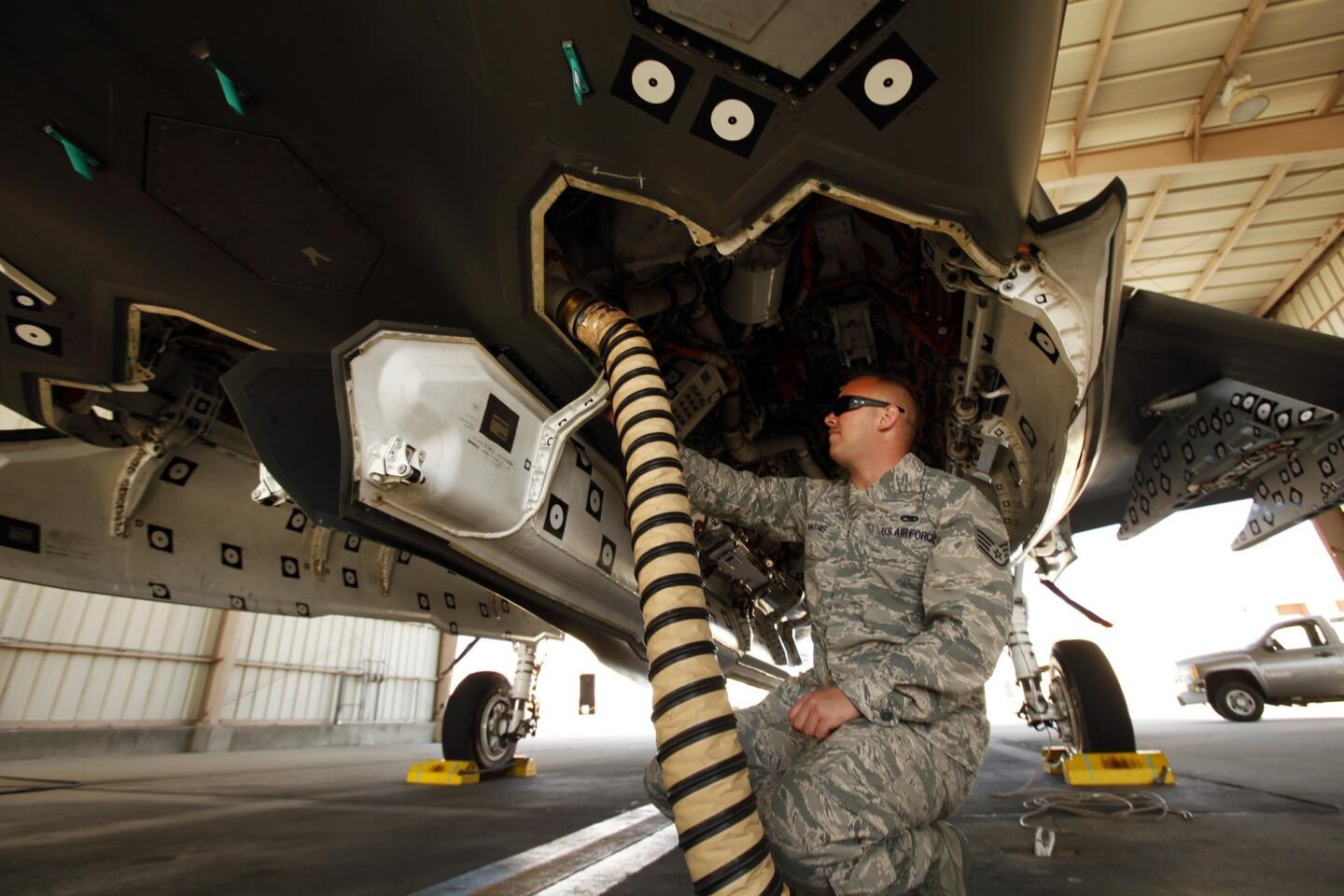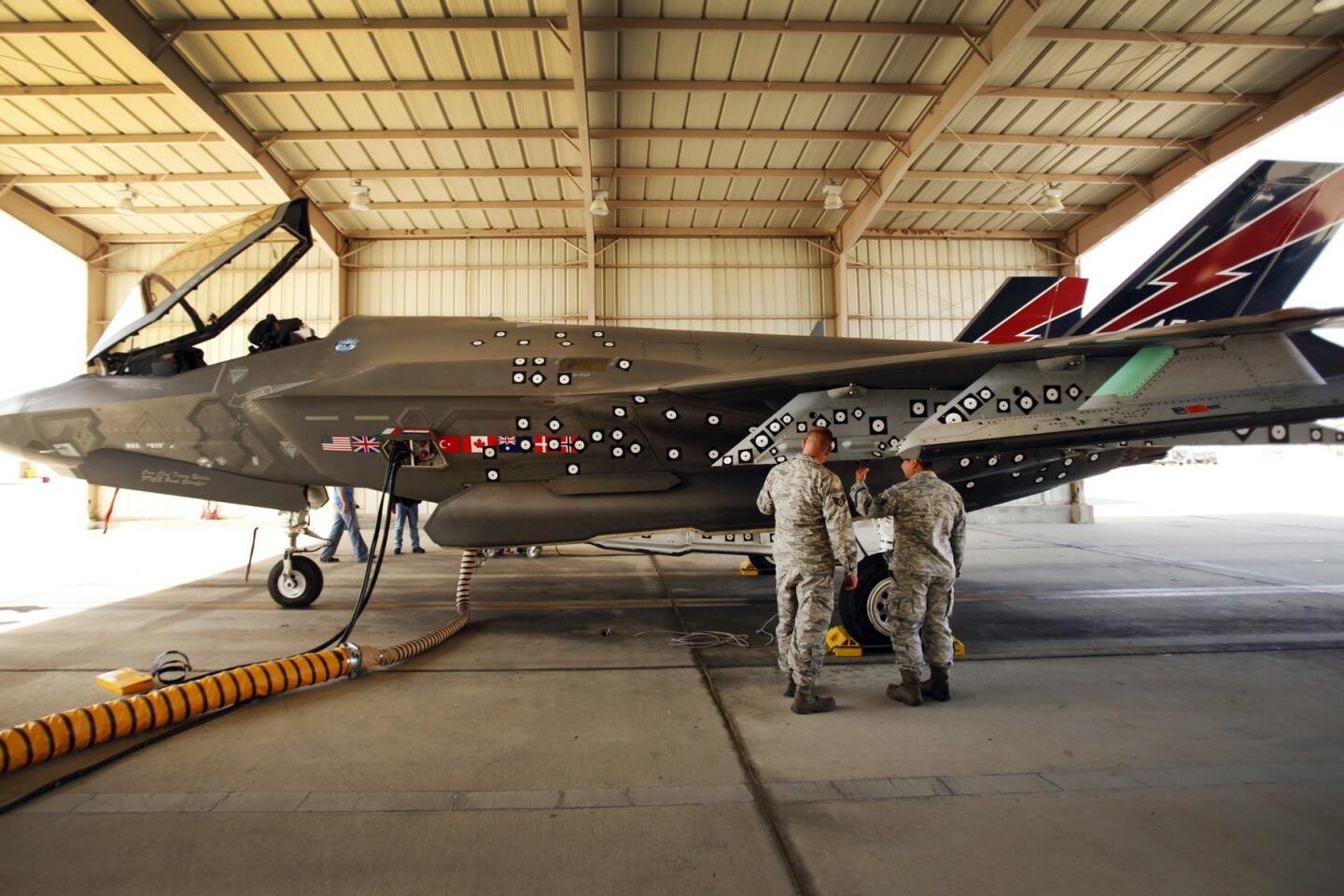F-35 fighter jet struggles to take off
The F-35, after a decade of administrative problems, cost overruns and technical glitches, is still not ready for action.
- Share via
Far beyond the electronic security gates and razor-wire topped fences, Col. Rod Cregier surveys a team of technicians busily readying a lithe F-35 fighter jet for its next test flight.
As the F-35 program director at the base, Cregier and his team play a crucial role in a nationwide military effort to get the high-tech jet ready for battle.
After a decade of administrative problems, cost overruns and technical glitches, the F-35 is still not ready for action. The program has consistently come under political attack even though the military considers it crucial to the nation's defense needs.
Cregier believes the program is finally on course and said he is convinced that the jet can successfully replace the military's aging fighter fleets — some 34 years old — though he does not downplay the significant challenges his team faces.
"This is an incredibly complex aircraft, the most complex aircraft ever built," Cregier said. "Getting it right isn't easy."
In the skies above the Mojave Desert, test pilots today are pushing the radar-evading F-35 to new heights and flying to ever-increasing speeds to uncover design flaws. Just last week, an F-35 launched a missile in mid-flight from its internal weapons bay for the first time in a test flight for the Air Force.
But problems constantly crop up. Twice this year alone, F-35s have been grounded after different parts failed.
Testing the F-35 is key to the Pentagon's ultimate plan to build 2,457 of the planes. Known as the Joint Strike Fighter, the program centered around a plan to develop one basic fighter plane that could — with a few tweaks — be used by the Air Force, Navy and Marine Corps.
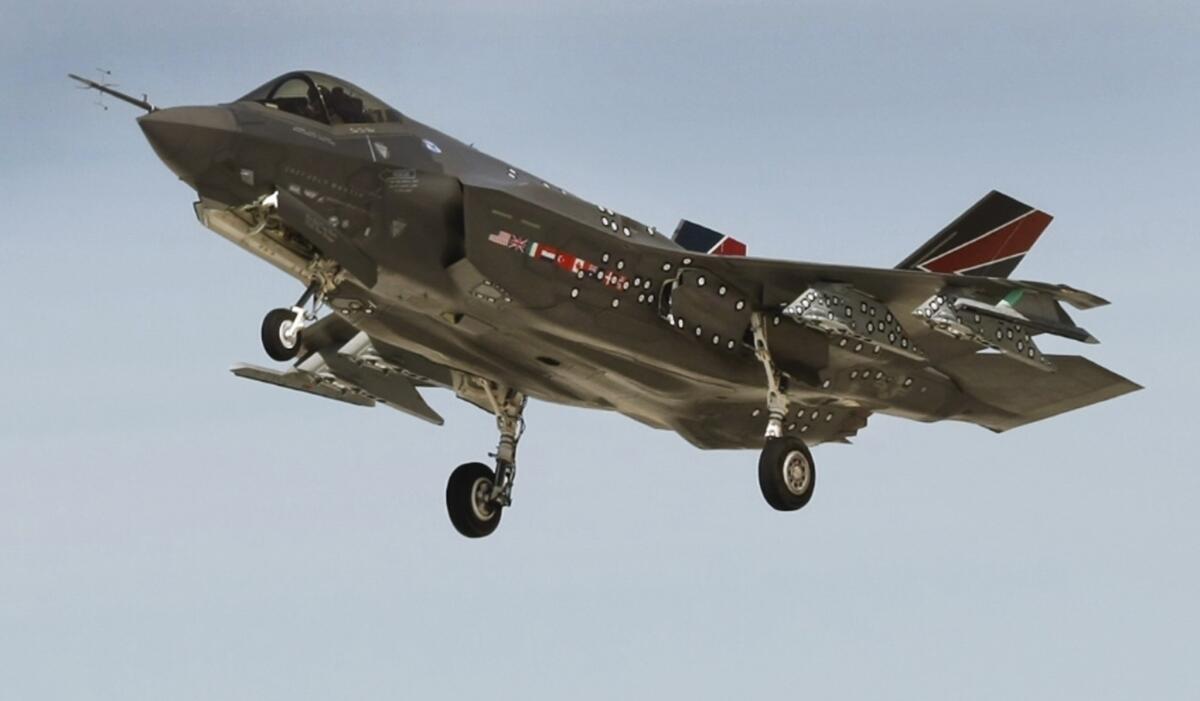
The Lockheed Martin F-35 Lightning II lifts off during testing at Edwards Air Force Base on March 19, 2013. The numerous decals fixed to the side of the jet are used to monitor flight and payload performance during testing. More photos
The idea is that it can take off and land on runways and aircraft carriers, as well as hover like a helicopter. No one fighter aircraft has had all these capabilities. From an engineering standpoint, it's a challenging task for plane maker Lockheed Martin Corp. because the requirements of the different services vary so much.
Each day, test pilots are expanding the edges of the F-35's flight envelope of all three variants at Edwards Air Force Base and Naval Air Station Patuxent River in Maryland.
Pressure intensified on the test teams last week when the Marines Corps said it wanted its F-35s to be ready for combat by the end of 2015 — one year earlier than planned. The Air Force also moved up its date, to 2016. The Navy plans to see its F-35s aboard U.S. aircraft carriers by early-2019.
This is an ambitious plan, considering the Government Accountability Office estimated that F-35 flight testing, which has repeatedly fallen behind schedule, is only about one-third complete.
On more than one occasion the Pentagon's director of operational test and evaluation has lowered the plane's performance specifications by reducing turn performance and slowing the acceleration rate.
The most demanding testing still lies years ahead.
Now we're paying the price for being wrong.”— By Frank Kendall, undersecretary of defense for acquisition
The GAO estimated the program would cost an unprecedented $12.6 billion a year on average through 2037 — that's an average of about $1.4 million an hour for the next two and a half decades.
The per-plane cost estimates have climbed to $161 million today from $81 million in 2001, the GAO said.
The Pentagon has been relentless in its pursuit to develop the F-35 because its fighter planes are aging fast. The Air Force's 1,664 fighters' average age is 23 years — considered the oldest in its history.
Test pilots say some of the F-35's delays can be traced to the concept that computer simulation and modeling would recognize many of the F-35 design problems right away, instead of the old-fashioned method of testing: in the air.
Under this premise, the Pentagon approved a plan to manufacture F-35s while simultaneously testing them. The plan, called concurrency, calls for scores of F-35s to be sent back to Lockheed for rework after testing is done.
Frank Kendall, the undersecretary of defense for acquisition, called this approach "acquisition malpractice" last year and said that predictions were too optimistic.
"Now we're paying the price for being wrong," Kendall said.
There are 61 F-35s already delivered, 81 completely built and others still being assembled at Lockheed's facility in Ft. Worth, Texas. The Pentagon estimated that retrofit costs for the first 90 aircraft will amount to $1.2 billion.
Lockheed's political reach »
Lockheed Martin has given more than $2.8 million in donations to political candidates from all 50 states in the 2012 cycle, and promotes the fact that the F-35 program provides 127,000 direct and indirect jobs in 47 states and Puerto Rico. View graphic »
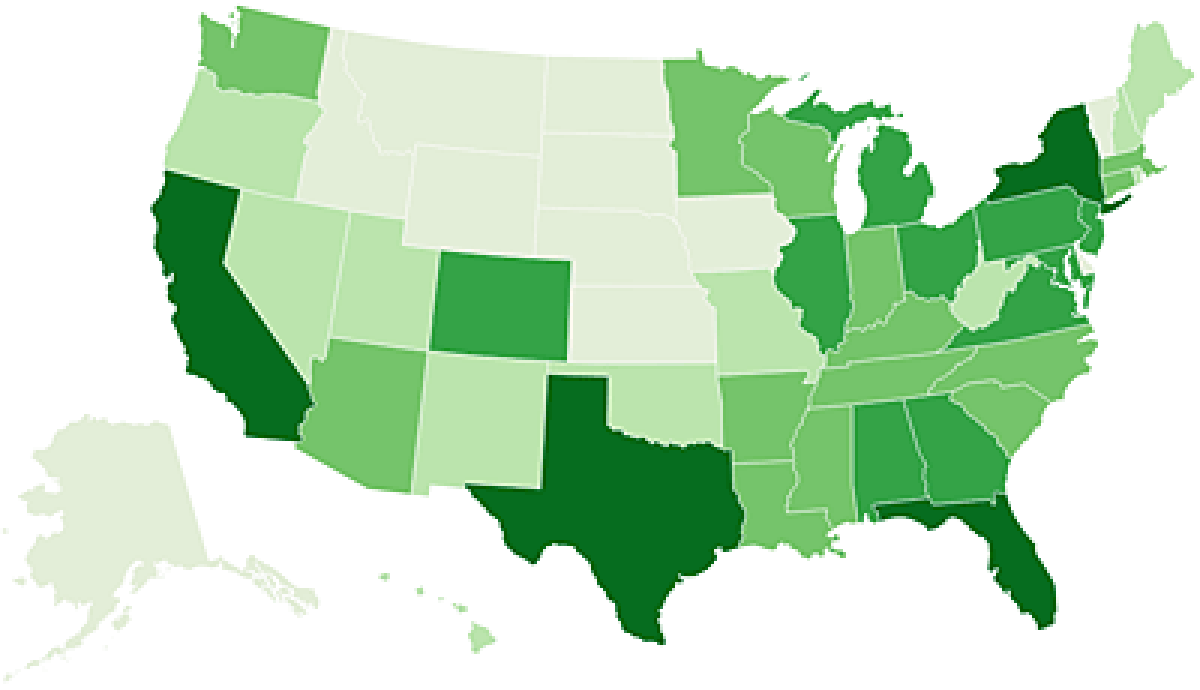
Winslow T. Wheeler, a military budget specialist and frequent Pentagon critic at the Project for Government Oversight, said the decision to test and build the F-35 at the same time was a political move to get federal funding flowing to congressional districts before actual performance of the weapon system was shown.
Lockheed has long had political muscle — the company donated to 425 of 535 Congressional members in the 2012 cycle, according to OpenSecrets.org — and has garnered bipartisan support around the F-35 program.
The company promotes the fact that the F-35 provides 127,000 direct and indirect jobs in 47 states and Puerto Rico. It expects to pump an estimated $6 billion into California's economy this year involving 298 companies and resulting in 28,000 jobs.
"It's a way for the contractor to get the hooks in Congress," he said. "For a contractor, the measure of success in a program is getting it started. Once you get that money rolling in, it doesn't matter whether or not the thing you built works."
Supporters and critics alike say the F-35's escalating price represents an inescapable roadblock that Congress must face. The government's track record is clear: The more a plane costs, the fewer it buys.
Two decades ago, officials wanted 648 F-22 fighter jets for $149 million per plane. Eventually, the military ended up with only 188 at a price tag of $412 million each. Before that, the Pentagon wanted 132 new B-2 stealth bombers at about $500 million per plane. It ultimately bought 21 at $2.1 billion each.
Steve O'Bryan, a Lockheed vice president, admits the "early effects of concurrency were more disruptive" than the company had initially thought, but that the program is back on track. He said the F-35 will have completed 50% of testing by year's end.
"We're now at a tipping point with this program," O'Bryan said. "We've figured things out, brought costs down, increased orders from international partners."
Three Joint Strike Fighters in one »
With modifications, one fighter jet will serve the Air Force, Navy and Marine Corps. Below, an Air Force version is shown. See all variants »
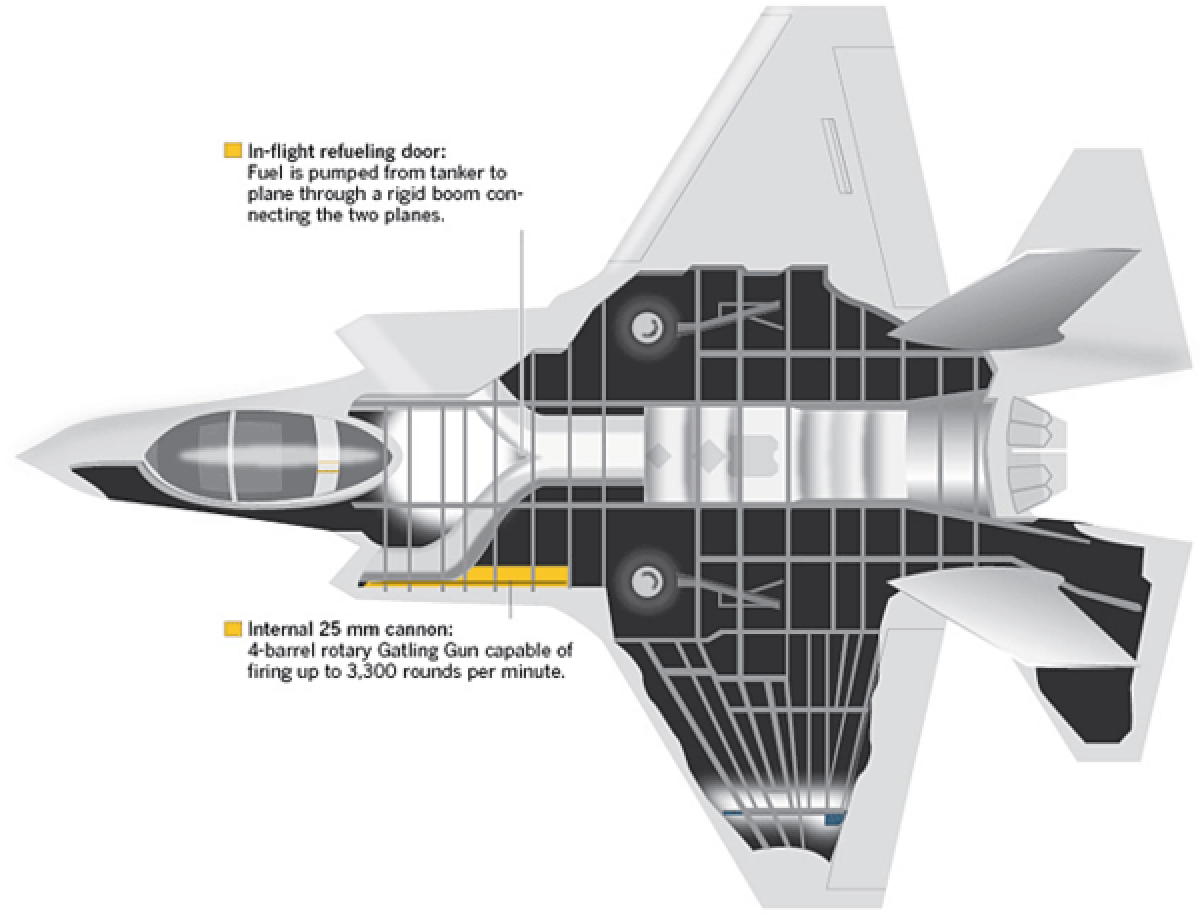
He was backed up in the Pentagon's latest cost estimates that were released last month. The report said that — for the first time ever — the F-35's development and production cost had decreased by 1.1% to $391.2 billion from $395.7 billion, and O'Bryan expects the downward trend to continue.
Because of F-35 delays, the GAO said the military will spend about $8 billion to extend the life of its Cold War-era fighter aircraft and to buy new versions of the planes.
Lockheed is making its F-35 sales pitch overseas, where there is growing interest from places such as South Korea and Singapore. There are already foreign buyers relying on the program. Lockheed plans on selling hundreds of F-35s to the some the U.S.'s closest military partners: Britain, Italy, Australia, Canada, Norway, Turkey, Denmark and the Netherlands.
The intense interest is felt back on the air base at Edwards, where Cregier stands in front of an F-35 called the "show pony." The plane bears eight stickers representing the flags of all the partner countries.
"Everyone is aware that money and politics is a big part of this program," Cregier said. "My job is to filter that away from the force."
Follow W.J. Hennigan (@wjhenn) and Ralph Vartabedian (@RVartabedian) on Twitter
Inside the business of entertainment
The Wide Shot brings you news, analysis and insights on everything from streaming wars to production — and what it all means for the future.
You may occasionally receive promotional content from the Los Angeles Times.
